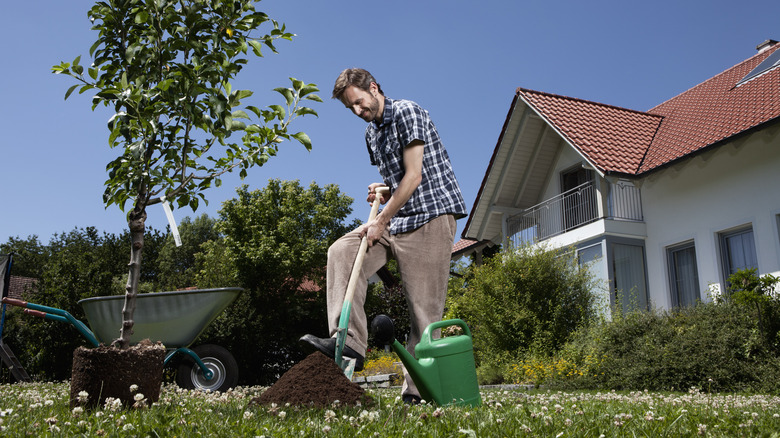Shade trees are not just aesthetically pleasing additions to your property; they also bring about various advantages that make them a desirable feature. Beyond enhancing the visual appeal of your landscape, trees like maple, oak, linden, beech, and elm provide essential shade, offering relief from the harsh rays of the sun and reducing energy costs by cooling your home during hot weather.
Additionally, shade trees contribute to environmental health by absorbing carbon dioxide and releasing oxygen, and providing habitats for birds, insects, and other wildlife. Their root systems absorb rainwater, reducing runoff and the risk of flooding –- an especially important benefit for urban areas with impervious surfaces. Trees can also help block noise in a loud area, creating a quieter, more pleasant home environment. Considering all these benefits, you may want to try your hand at planting your own shade tree.
Growing a shade tree requires a combination of careful planning and diligent care, from the moment you plant the seedling up through the process of providing everything it needs to thrive. These proven tips will ensure the healthy growth and longevity of your shade trees.
Planting tips for successful shade tree growth

Proper planting and ongoing care are crucial for the successful establishment and long-term health of shade trees. But first, to boost your chances of cultivating thriving shade trees, choose species that thrive in your specific climate and soil conditions. Research local native shade tree varieties, as they are often better adapted to the environment.
Before planting, carefully inspect the tree root ball for any circling or girdling roots. If present, gently tease them apart or, in more severe cases, make vertical cuts to encourage outward growth. Ensure the tree is planted at the right depth, with enough space for its roots to spread. When planting a shade tree, ensure that the top of the root ball sits slightly above the soil level. Planting it too deep can lead to oxygen deprivation for the roots, causing stress, and slowing the growth of the tree.
Use the native soil you removed from the planting hole to backfill. This ensures a seamless transition for the roots from the root ball to the surrounding soil. Avoid amending the soil, as this can create a stark contrast between the root ball and the native soil, potentially leading to water drainage issues. Water the newly planted shade tree frequently during the first growing season to help establish a healthy root system. As it grows, aim to maintain moisture in the soil, not waterlogged conditions. During the dry season, check the top two inches of the soil and water the tree if the earth feels dry at that depth.
Shade tree care and maintenance
Caring for shade trees involves a combination of strategic practices to maintain their health and vitality. Mulching the young tree with wood chips or shredded bark around the base helps retain moisture, suppresses weed growth, and regulates soil temperature. Depending on soil conditions, fertilizing may be unnecessary after initial planting. However, you may use a balanced slow-release fertilizer in early spring to provide essential nutrients and support vigorous growth.
Protect the young tree from extreme weather conditions, such as frost or intense sunlight, by using tree wraps or shading devices. You can purchase tree wraps online, like the HORT Paper Tree Wrap (3″ x 50′ roll) for $15.99 at Walmart, or a 4″ x 150′ roll of the Treekote Tree Wrap for $15.79 at Eaton Brothers. Limit pruning to the removal of dead or damaged branches during the first few years, since excessive pruning can stress the tree and hinder its establishment. Regularly inspect the tree for pests and diseases as early detection allows for prompt and targeted treatment.
Remember, different tree species may have unique care requirements, so it’s beneficial to familiarize yourself with the specific needs of the shade tree you’ve planted. Additionally, consulting with local arborists or extension services can provide tailored advice based on your geographical location and soil conditions.
